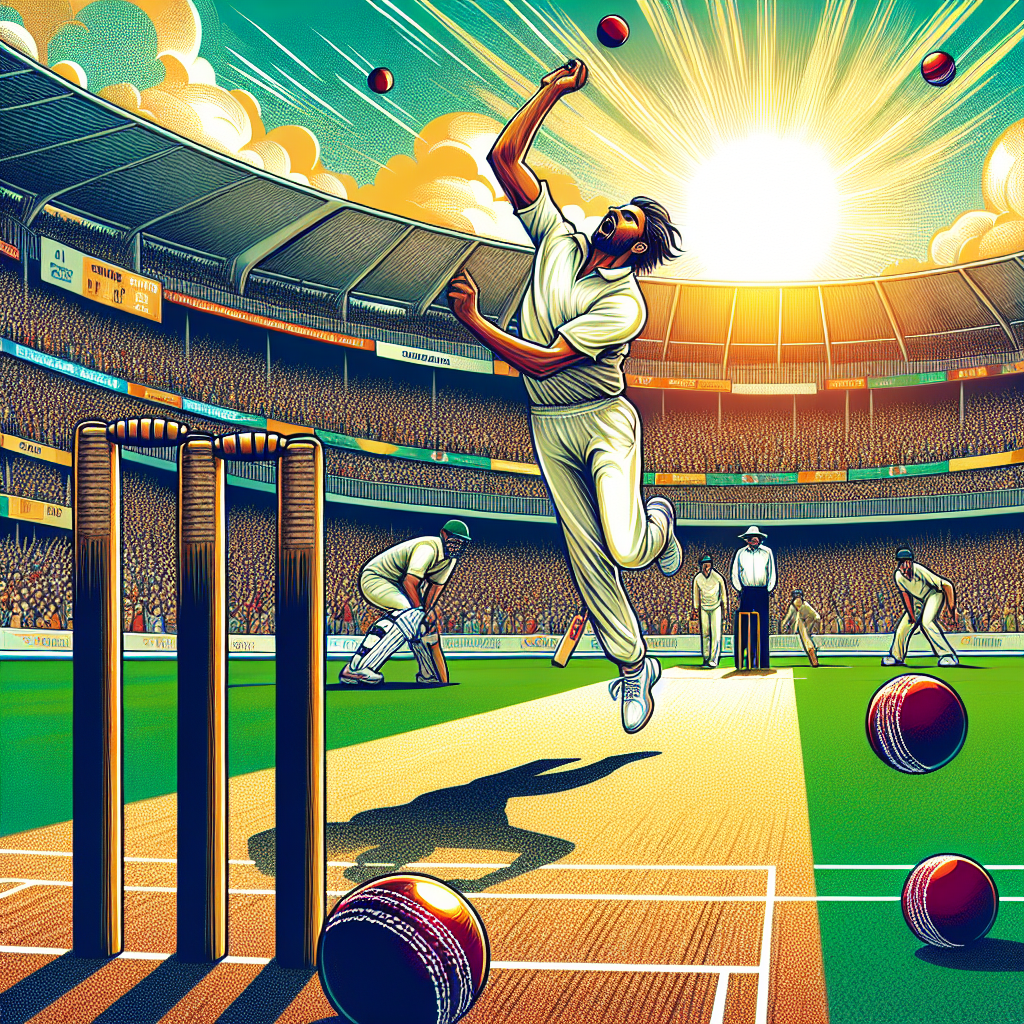
One Day International (ODI) cricket has been a platform for some of the most thrilling and record-breaking performances in the history of the sport. Among these, the achievement of taking the most wickets in a single ODI match stands out as a testament to a bowler's skill, strategy, and endurance. This article delves into the history of this remarkable feat, exploring the players who have achieved it, the context of their performances, and the impact these records have had on the game.
The Significance of Wicket-Taking in ODIs
In the fast-paced world of ODI cricket, taking wickets is crucial for a team's success. Unlike Test cricket, where bowlers have the luxury of time to set up a batsman, ODIs require bowlers to be both aggressive and economical. The ability to take wickets not only disrupts the batting side's momentum but also puts pressure on the incoming batsmen, often leading to a collapse.
Historical Context: Evolution of Bowling in ODIs
Since the inception of ODIs in 1971, the game has evolved significantly. Initially, ODIs were seen as an extension of Test cricket, with bowlers focusing on line and length. However, as the format matured, bowlers began to innovate, developing new techniques and strategies to outsmart batsmen. The introduction of limited overs and fielding restrictions further challenged bowlers, making wicket-taking an even more valuable skill.
Record Holders: Most Wickets in a Single ODI Match
Over the years, several bowlers have etched their names in the record books by taking the most wickets in a single ODI match. Here are some of the most notable performances:
- Chaminda Vaas (Sri Lanka) - 8/19 against Zimbabwe, 2001: Vaas's performance remains the best bowling figures in ODI history. His ability to swing the ball both ways and exploit the conditions made him a formidable opponent for the Zimbabwean batsmen.
- Shahid Afridi (Pakistan) - 7/12 against West Indies, 2013: Known for his aggressive style, Afridi's leg-spin bamboozled the West Indies batsmen, leading to one of the most memorable performances in ODI cricket.
- Glenn McGrath (Australia) - 7/15 against Namibia, 2003: McGrath's precision and consistency were on full display during this World Cup match, as he dismantled the Namibian batting lineup with ease.
Case Studies: Analyzing Iconic Performances
Chaminda Vaas's 8/19 Against Zimbabwe
Chaminda Vaas's record-breaking performance against Zimbabwe in 2001 is often cited as one of the greatest bowling displays in ODI history. Playing in Colombo, Vaas exploited the early morning conditions to perfection. His ability to swing the ball both ways left the Zimbabwean batsmen clueless, resulting in a historic 8-wicket haul. This performance not only secured a comfortable victory for Sri Lanka but also set a benchmark for future bowlers.
Shahid Afridi's 7/12 Against West Indies
Shahid Afridi's 7/12 against the West Indies in 2013 is another iconic performance that showcased the impact a bowler can have in an ODI match. Afridi, known for his aggressive leg-spin, used variations in pace and flight to deceive the West Indies batsmen. His performance was instrumental in Pakistan's victory and highlighted the importance of spin bowling in limited-overs cricket.
Impact of Record-Breaking Performances on ODI Cricket
Record-breaking performances like those of Vaas and Afridi have had a significant impact on ODI cricket. They have inspired a generation of bowlers to innovate and adapt to the challenges of limited-overs cricket. These performances have also highlighted the importance of strategic planning and execution in achieving success at the highest level.
Strategies for Success: How Bowlers Achieve Record Wickets
Achieving a record number of wickets in a single ODI match requires a combination of skill, strategy, and mental toughness. Here are some key strategies employed by successful bowlers:
- Exploiting Conditions: Understanding and utilizing pitch and weather conditions can give bowlers a significant advantage.
- Variation in Pace and Length: Mixing up deliveries keeps batsmen guessing and increases the chances of taking wickets.
- Field Placement: Strategic field placements can create pressure and lead to mistakes from batsmen.
- Mental Toughness: Maintaining focus and composure under pressure is crucial for achieving success in high-stakes matches.
The Future of Wicket-Taking in ODIs
As ODI cricket continues to evolve, the role of bowlers will remain crucial. With advancements in technology and analytics, bowlers now have access to more data than ever before, allowing them to refine their strategies and improve their performances. The future of wicket-taking in ODIs will likely see a blend of traditional skills and modern innovations, as bowlers strive to break existing records and set new benchmarks.
Conclusion: Celebrating the Art of Bowling in ODIs
The achievement of taking the most wickets in a single ODI match is a testament to a bowler's skill, strategy, and determination. Performances like those of Chaminda Vaas and Shahid Afridi have not only set records but also inspired future generations of cricketers. As ODI cricket continues to evolve, the art of bowling will remain a critical component of the game, with bowlers constantly pushing the boundaries of what is possible. These record-breaking feats remind us of the excitement and unpredictability that make cricket one of the most beloved sports in the world.

